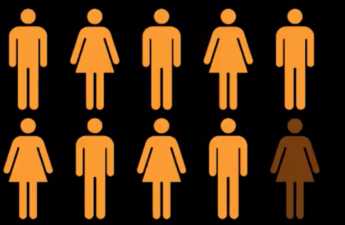
Staying at home is essential, but when distancing is difficult, wearing a non-medical mask may help limit the spread of COVID-19
Public Health Insider, Public Health – Seattle & King County
Updated at 7:30pm on 4-3-2020
Staying apart from others is our best protection against COVID-19. The most important ways of preventing COVID-19 are frequent handwashing, avoiding touching your face, staying away from ill people, staying home and avoiding all non-essential activities and contact with others.
Mask use does not replace the need to follow these important precautions to prevent illness.
Why are we now offering new information on masks?
There has been recent discussion among health experts about the potential benefits of mask use for the general public. With a new disease we are learning more every day, and recent studies indicate that the virus that causes COVID-19 can be spread by people who are not showing symptoms.
For this reason, on April 3rd, the U.S. Centers for Disease Control (CDC) recommended that people who are in areas such as King County, with significant community-based spread of COVID-19, should wear cloth face coverings when they are in a public setting where it is difficult to keep six feet away from others (e.g., grocery stores and pharmacies).
Earlier guidance emphasized that anyone who is ill should wear a mask in public or around others – this guidance still stands.
Important! Reserve medical masks for healthcare providers
Members of the general public should not wear medical grade or surgical masks at this time, as there is a serious shortage of face masks for healthcare workers. Medical masks should be reserved for healthcare providers who are on the front lines working to protect us all. Please avoid shopping for surgical, N95 respirator, or other medical masks.
Non-medical masks may be helpful
Wearing a homemade cloth mask (or other non-medical grade mask or face covering) may provide benefits in preventing the spread of COVID-19 in our community. But, because there are few studies, we don’t really know for sure how useful cloth masks or other face coverings might be.
“Medical masks are needed for healthcare workers who are caring for patients with COVID-19. We need our healthcare workers to be able to safely continue providing their services during this pandemic,” said Dr. Jeff Duchin, Health Officer for Public Health—Seattle & King County. “For the general public, homemade fabric masks, especially if well-made and fit, may provide some benefit.”
How might homemade cloth mask use help slow the spread of COVID-19?
There may be benefit from homemade non-medical fabric mask use by the general public, but how much benefit is uncertain.

COVID-19 is primarily spread by respiratory droplets that carry the virus and are produced when someone with the infection coughs, sneezes and, to a lesser degree, speaks. COVID-19 also can be spread if droplets come in contact with the eyes, and through touching contaminated surfaces and then touching the face (eyes, nose or mouth).
Wearing a fabric mask could help decrease the risk for spread of infection to others when the mask is worn by someone who already is infected with the virus that causes COVID-19, even if they don’t have symptoms. In this case, the mask could help by blocking infectious droplets from spreading when someone with the infection coughs, sneezes, or speaks.
“Don’t depend on cloth masks to provide protection to the person wearing the mask – this may depend on the quality of the mask and how well it fits. For this reason, homemade and fabric masks should not be considered reliable protection for the wearer but may provide benefit to the community,” said Duchin.
Can homemade face masks cause harm? Some experts are concerned that mask use by the public might make people feel more protected than they actually are. People may be less likely to take more important steps to prevent COVID-19 infection. They may be less likely to stay home and avoid all non-essential activities and contact with others, or take precautions like frequent handwashing, and not touching the face (eyes, nose and mouth). Another concern is that people will touch their face or mask more often and contaminate their face or hands.
Face masks best practices (if you wear one, do so safely)
Face masks are most effective when worn consistently and properly in order to avoid contaminating the hands or face of the user. Change fabric masks when moist and wash after use. Worn masks may be contaminated with infectious agents.
The CDC has created DIY-cloth-face-covering-instructions-CDC.
The following advice on how to wear a mask safely comes from the World Health Organization:
- Before putting on a mask, clean hands with alcohol-based hand rub or soap and water.
- Cover mouth and nose with mask and make sure there are no gaps between your face and the mask.
- Avoid touching the mask while using it; if you do, clean your hands with alcohol-based hand rub or soap and water.
- Replace the mask with a new one as soon as it is damp and do not re-use single-use masks.
- To remove the mask: remove it from behind – do not touch the front of mask; discard immediately in a closed bin; clean hands with alcohol-based hand rub or soap and water.
Some basic Design Principles for creating home-made masks:
- Build a mask that tightly encloses the area around the nose and mouth, from the bridge of the nose down to the chin, and extending onto the cheek beyond the corners of the mouth, so no gaps occur when talking or moving.
- Use mask material that is tightly woven but breathable. Possibly double-layer the fabric. Masks must be made from washable material such as fabric. Choose a fabric that can handle high temperatures and bleach without shrinking or otherwise deforming.
- The mask should be tolerant of expected amounts of moisture from breathing.
- Read more details and other important considerations from Minnesota Dept. of Health
Additional Resources
DIY Facemasks from the University of Minnesota
Testing the Efficacy of Homemade Masks: Would They Protect in an Influenza Pandemic?
A cluster randomized trial of cloth masks compared with medical masks in healthcare workers
The bottom line: Everyone, even people who are young and healthy, must stay home to slow the spread of COVID-19. Each individual’s actions affect the health of our entire community, and what we do as a community protects us all. Stand Together, Stay Apart


